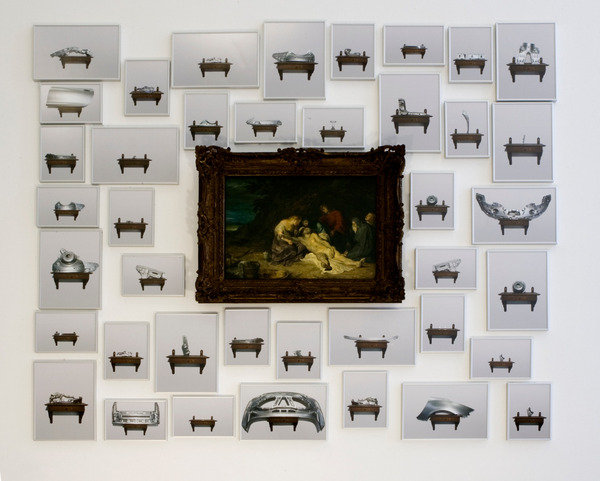Martin Douven - Leopoldsburg - Jef Geys
dal 8/9/2011 al 30/12/2011
Segnalato da
8/9/2011
Martin Douven - Leopoldsburg - Jef Geys
Museum van Hedendaagse Kunst Antwerpen M HKA, Antwerp
What made an image 'attractive', to whom, and how? This gave rise to a series of black paintings in which Geys marked the centre of gravity geometrically. It was here too that his exploration of various aspects of the painting itself began: support, material, helpers, signature, and so on. All this together, starting out from Martin Douven, forms the subject of this exhibition.

Martin Douven (1898-1973), a self-taught painter from Leopoldsburg, started selling his own small paintings in 1928. He later taught his children and others to paint in a form of mass production. After the war his company expanded into a factory making both paintings and frames that employed two hundred people and exported worldwide.
As a boy, Jef Geys was at school with one of Douven’s sons, and this gave him the opportunity to see the workings of the factory. In the late fifties, when he was already a painter and teacher, by chance he received from his father-in-law a painting originating from Douven’s workshops. This work (of a lake with two small swans) became the starting point for a study of the essential elements of painting: what made an image ‘attractive’, to whom, and how? This gave rise to a series of black paintings in which Geys marked the centre of gravity geometrically. It was here too that his exploration of various aspects of the painting itself began: support, material, helpers, signature, and so on. All this together, starting out from Martin Douven, forms the subject of this exhibition.
Image: Jef Geys, Rubens + Z4 BMW onderdelen, photo M HKA
Press contacts:
Kathleen Weyts, T 0032 3 260 80 97 kathleen.weyts@muhka.be
Museum van Hedendaagse Kunst Antwerpen M HKA
Leuvenstraat 32, 2000 Antwerpen, België
Hours
TUE-WED en FRI-SUN 11:00-18:00
THU 11:00-21:00
Closed on Mondays, 1st January, 1st May, Ascension Day, 25th December
Admission
€ 8
€ 4: -26, 60+, groups of 10 or more, those seeking employment, the physically challenged and their escorts, members of the NICC, inhabitants of Antwerp, Gezinsbond
Free: -13



